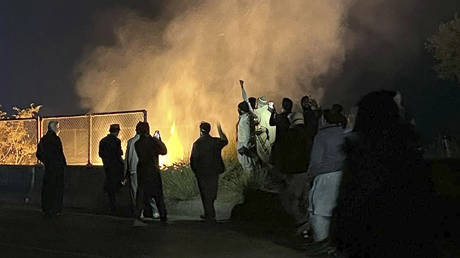“I’m from Ribes, for those who don’t know,” Aitana Bonmati said in the documentary about her career made by Catalan television station TV3 in 2024.
Bonmati is proud of her roots in Sant Pere de Ribes, a small town 40 minutes south of Barcelona. As The Athletic finds on a visit, the feeling is entirely mutual.
It is less than a month since the 27-year-old Barca midfielder collected her third consecutive Ballon d’Or dressed in copper sequins at the Theatre du Chatelet in Paris. By the morning, she was having breakfast in her street clothes at her favourite cafe in her hometown.
“My comfort zone and where I feel most comfortable is in the square of my village with my friends,” she explained at an event in Barcelona three days after winning the award that recognised her as the world’s best player.
“When I have to wear a dress, I wear it and live it the way I think I should live it, but the next day, normality returns. You’re no longer at a gala and you have to go back to being yourself.”
Ribes is the place where she grew up, first kicked a ball, became a woman and the best footballer in the world.
She has been able to taste the sweetness of success without moving more than 10 minutes away from where her parents, Rosa and Vicent, live and the house where she grew up.
The midfielder is proud to be Catalan. In 2021, she celebrated her first Champions League victory by singing Sopa de Cabra’s Catalan anthem ‘L’Emporda’ with then team-mate Laia Codina, now at Arsenal.
Her closest circle of friends are those she met at school and at the “esplai” (youth clubs) at weekends. She spends most of her summers on the Costa Brava and in the Catalan Pyrenees rather than travelling the world.
She listens to Catalan bands Oques Grasses and The Tyets and last year went to the music festival in Barcelona province Cabro Rock, where she was seen dancing and singing, far from the VIP area.
Bonmati is a standard 27-year-old Catalan, except that on weekends she dresses like a star — and plays like one — in Barcelona colours.
The Athletic has been to her hometown of Sant Pere de Ribes, or Ribes as the locals call it, to visit five places that have made her special.
It is October, the sky is blue, and there is a warmth to the sun.
It takes less than five minutes to realise that Ribes is a quiet town where everyone knows each other. In Placa Marcer, the town’s nerve centre, a local warns us: “After nine o’clock at night, you can’t hear a thing”. As he says this, a boy rushes across the square and everyone greets him. “Bye, Pol!”
“He’s one of Aitana’s best friends,” another resident explains. In Placa Marcer, there are restaurants, a white fountain and palm trees surrounding the square. The church, surprisingly large for a small town, is visible.
In one corner, there is a bar, the Cabaler Cafe, where Bonmati and friends spend time and where she had breakfast the morning after winning her most recent Ballon d’Or.
“That corner belongs to Aitana and her friends,” a customer explains.
Her school: Escola El Pi
“At break time, everyone (girls and boys) wanted to play on Aitana’s team,” says Lluis Molina, a former teacher in Bonmati’s final year of primary school. “Her team always won.
“It was impossible to predict how far she would go, but she stood out with the ball. There were children who were envious and angry because they saw that a girl was outplaying them”.
L’Escola El Pi (Pine Tree School) is named for one reason: there used to be a huge pine tree on the street where it is located. Some time ago, it fell down, and only part of the trunk and the iron support that held it up remain.
It is a school of just over 200 children. As soon as you walk through the door, you see Bonmati is very much present.
The school has a “Raco Aitana Bonmati Conca”, a corner with a dedication from the player, pages from an article published in a Catalan newspaper mentioning the school, and a ball from the Johan Cruyff Foundation, of which Bonmati is an ambassador.
The playground remembers her too. It is called “Pati 14” (playground 14) in honour of the shirt number she wears for Barca, shared with Cruyff, and it has 14 rules.
Aitana made friends there who are the same ones she has today.
Her youth centre: Esplai Ger
‘Esplais’ are common in Catalonia — a type of non-profit, volunteer-run youth centre.
They provide educational activities and promote social transformation for children and young people through informal education, participation and the development of values such as solidarity and children’s rights.
It was at the Esplai Ger in Ribes that Bonmati met one of her best friends, Ainara Gil, when they were both four years old. Gil did not live in Ribes at first and the pair only saw each other on weekends at the Esplai. But over time her family moved there and, despite going to different schools, her and Bonmati spent every day together.
“Growing up together there (at the Esplai) was really cool — that’s where we developed our personalities,” Gil adds. “I was someone who loved playing with dolls and she started to like football. At that time, the summer camp (organised by the group) united us so much that we didn’t think we were different.
“But we didn’t drift apart, quite the opposite. After the esplai, Aitana and I have had very full lives outside of it.”
Their group of friends remains the same. But, rather than the organised trips to Menorca, the Catalan town of Sant Pere de Torello or Zuhatza in the Basque Country which they used to go on as teenagers, they now rent rural houses for their holidays.
When Bonmati was presented with her third Ballon d’Or at the Estadi Johan Cruyff before Barcelona’s game against Espanyol, Gil was the one who handed her the trophy. Bonmati had dedicated it to Gil’s mother, Esther, who died last Christmas following an illness.
“Esplai Ger created a family that still exists today,” Gil says.
Per a tu, Esther. 🥹❤️ pic.twitter.com/yOLzBKo1Uk
— FC Barcelona Femení (@FCBfemeni) September 28, 2025
Her first football club: CD Ribes
Ruben Bernardo, has fond memories of Bonmati’s early career at CD Ribes, the town’s football club.
“Aitana was the only girl in a group of 19 players,” says Bernardo, Bonmati’s first coach. “One day, her mother parked her car in front of the pitch and told me that Aitana didn’t want to train. I went and sat in the back seat and asked what was wrong. She told me the boys had been picking on her. I said they were just jealous because she was better than the rest.”
Today, the ground is named after her and features a huge mural.
“On the first day, I could see she was special,” Bernardo says. “The year she moved up to the Alevin (under-11) team, on a large pitch. She would run down to get the ball, receive it, turn — she was doing what she does now. That gesture she makes with her hands sometimes when asking for the ball, she was doing it here at 11.
“She was the player who got most angry when we lost, the one who got most angry if they didn’t pass her the ball. That character is the same.”
Bernardo explains there was no envy in their group, but Bonmati forged her character by putting up with comments from parents of rival teams. “As they were all boys, they reproached them for letting a girl take the ball away from them. Now that has changed,” he says.
As The Athletic speaks to Bernardo, the club’s players begin to arrive at the stadium for training — all wearing Adidas club clothing. For a modest club in the Catalan Third Division, they look smart.
Bernardo explains that when Bonmati changed sponsors in 2024 and signed with Adidas, one of her requirements was that for the duration of her contract with them, the sportswear giant invest a certain amount of money in equipment for the club.
Her supporters’ group: Penya Barcelonista Ribes Aitana Bonmati
In Spain, clubs have supporters’ groups called peñas (or penyes in Catalan) which often have their own bars where fans can meet and watch games. Proof of Bonmati’s appeal in Ribes is that the town’s Barcelona penya is named after her.
“My grandmother lived next door to Esplai GER,” Josep Mestre, manager of the Penya Barcelonista de Ribes Aitana Bonmati, says. “When Aitana was little, she and her friends played football in the courtyard. She would sometimes accidentally kick the ball into my grandmother’s yard, and my grandmother would invite them in to swim in her pool.”
The group has a bar in Placa Marcer where the menu is inspired by footballers. You can order an Aitana Burger — with pea protein, as she does not eat meat. There is also a ‘Messi’ — anchovies, cockles, olives and two vermouths — or a ‘Guardiola’ — pickled mussels, crisps, olives and vermouth.
Fans gather there to watch Barcelona’s men and women play, and for big occasions such as the Ballon d’Or ceremony.
“When Aitana was still playing in the village, one day some members of the Johan Cruyff Foundation were setting up a pitch in a neighbouring village, Roquetes, and they saw her playing,” Mestre says. “She was playing in a group of boys, and they said to me: ‘Have you noticed the girl?’
“It’s incredible to have someone in the village who is making history and to see her so close, that we all know her, that we can talk to her. It’s very satisfying.”
The construction of a museum dedicated to Ribes’ prodigal daughter will start next year. A footballer proud of her town, and a town proud of its star.
This article originally appeared in The Athletic.
Barcelona, Spain, Champions League, Soccer, La Liga, Women’s Soccer
2025 The Athletic Media Company





